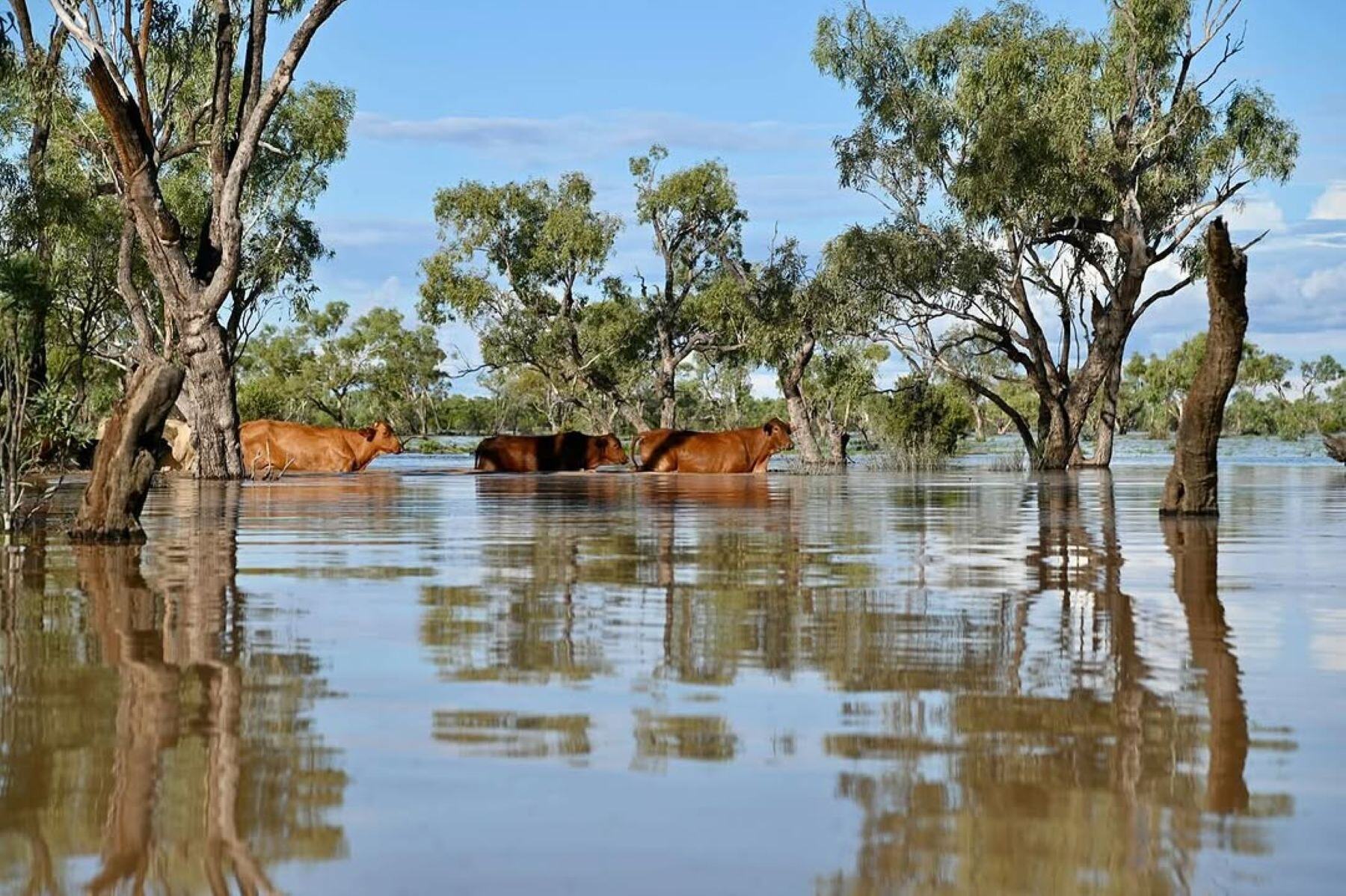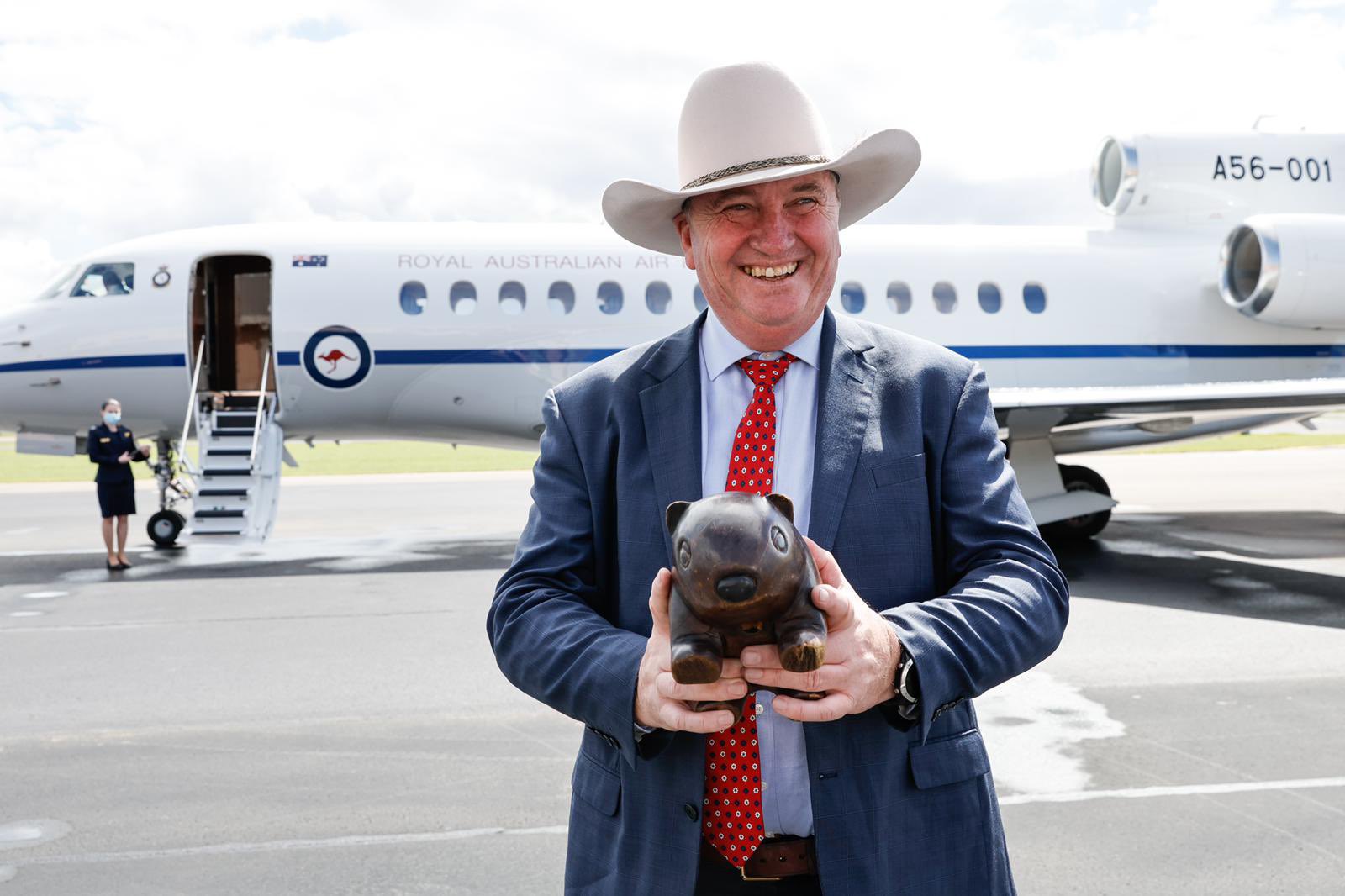Top 10 red meat trends for 2025
Meat & Livestock Australia (MLA) has released its Top 10 trends of 2025 report - with productivity gains, global demand and weather shifts dominating...
3 min read
AAP & Alex McLaughlin : Mar 31, 2025

Graziers across outback Queensland are facing devastation as floodwaters swallow homes, properties, and livelihoods, as numbers of livestock losses swell into the tens-of-thousands.
While the record-breaking rain has eased for some areas, rivers and creeks remain swollen, with floodwaters from multiple systems surging downstream. With more rain predicted over the coming days, some already inundated communities have feared they "are yet to see the worst".
READ MORE: Turning devastation to determination in Western Queensland
The current flood-affected region covers an area larger than Victoria, Tasmania, and New Zealand combined.
The full extent of livestock losses remains unclear, but as of midday on Monday Queensland’s Department of Primary Industries (QLD DPI) estimates 60,000 head of livestock, mostly cattle, had been lost and 49,500 were missing.
There are fears hundreds of thousands of livestock may be lost in floodwaters not seen in the region for more than 50 years.
"A lot of those communities have just been inundated with water that they've never seen before - 1974 was generally the benchmark, we've gone past that and a bit," AgForce general president Shane McCarthy told AAP.
At least 50 people in Thargomindah in Queensland's southwest were evacuated on Monday morning as the flooding threat spread in the sodden state.
"They're expecting seven metres of floodwaters in Thargo over the next few days," Mr McCarthy said.
"There's unprecedented levels of flooding out there."
The Bureau of Meteorology (BoM) warns the floods could be the worst in more than 50 years, with some areas receiving their annual average rainfall within days.
Dozens of residents were airlifted to safety as entire towns and properties were submerged. Among those affected is grazier Anthony Glasson, whose merino wool station, 35km south of Thargomindah, is surrounded by rising rivers.
"We've had a lot of flooding events here. It's not an uncommon thing, but of this magnitude, this is unprecedented," he said.
Mr Glasson has been battling thick mud to usher his cattle to higher ground and cart in hay for the coming weeks.
"There was too much water on our property, but we could get them through the fence onto the neighbour's land and onto a high spot," he said.
"They’ll be stuck on that island for two or three weeks."
The Bulloo River near his station has surged from a dry riverbed to over 6.4m.
"If we get more rain on Tuesday and Wednesday, it’s going to make an already scary situation even worse."
Emily Green who lives on a station 75km north of Adavale has felt the wrath of the flooding, having been recently evacuated from her home.
“I didn’t realise you could feel such immense grief for innate objects and moments in time,” Ms Green said.
“The thousands of cows, horses, kangaroos, lizards and birds that survived the driest of times and now won’t make it to see the green grass growing.
“All of it gone. The water came and went, washing away every milestone, memory and moment in its wake. Leaving behind inches of mud and miles of destruction.”
“The flood, like an unfamiliar and ferocious monster of the river beds managed to wrap its ugly tentacles around every community, township and station in its path.
“Repairable? Yes. Fixable? Mostly. Replaceable? Never.”
Footage from flooding 75km north of Adavale, Queensland. Video: Emily Green
Queensland Premier David Crisafulli warned some communities "are yet to see the worst," with major flood peaks still moving through river systems.
Devastating reports from graziers south of Longreach have been circulating, with reports of grazihers with 30,000 head of sheep only being able to account for 10% of their flock.
Cooper Creek, which runs through Queensland and South Australia, is already well above the 1974 major flood level and still rising.
More than 140 state-controlled roads remain cut off, and a key concern is ensuring enough aviation fuel for helicopters to deliver fodder to stranded livestock.
"In 2019, we saw livestock losses in the hundreds of thousands—we’re doing all we can to minimise that," he said.
Longreach Veterinary Services have provided a checklist to consider during and directly after this event. After a flood, livestock pets and working dogs face serious health risks. Early observations monitoring and action can prevent long-term losses.
Leader of The Nationals David Littleproud has called for a full-scale national response, comparing the disaster to the catastrophic 2019 floods, where up to half a million head of cattle were lost.
He welcomed the Prime Minister’s announcement of Category D funding and $2.5 million in joint funding for fodder drops.
"Immediate, large-scale support is desperately needed for western Queensland," he said.
"I have spoken with the Prime Minister, the Opposition Leader, and the Queensland Premier to thank them for this funding.
Disaster loans are now available for flood-affected small businesses and not-for-profits in multiple local government areas.
This includes Disaster Assistance Loans of up to $250,000 and Essential Working Capital Loans of up to $100,000 to cover repairs, restocking, wages, and other operational costs.
Personal Hardship Assistance has been extended to eligible residents in Longreach and Paroo, with grants available for emergency essentials, household item replacement, property repairs, and reconnection of utilities.
Several additional councils have also been approved for disaster response funding to assist with road repairs and recovery efforts.
Federal Minister for Emergency Management Jenny McAllister encouraged affected Queenslanders to check their eligibility for assistance.
"Disaster loans and hardship grants help people push through," she said.
"It’s vital to have confidence that better days are ahead—to know there will be food on the table, stock on the shelves, and your lights will turn on again and stay on."
ORGANISATIONS TO DONATE TO/SHARE
Farm Angels https://farmangels.org.au
Rural Aid https://www.ruralaid.org.au
Aussie Helpers https://aussiehelpers.org.au
Queensland Country Women’s Association. Public Rural Crisis Fund - 100% of funds go to those affected - many of the others take a percentage in admin or staff costs, even Go fund me. https://www.qcwa.org.au
.png)
Meat & Livestock Australia (MLA) has released its Top 10 trends of 2025 report - with productivity gains, global demand and weather shifts dominating...

Former deputy prime minister Barnaby Joyce will now sit in parliament as a member of One Nation after switching allegiances to Pauline Hanson's party.

Stay up to date with the latest livestock trends AuctionsPlus brings you the latest insights from Australia’s livestock markets, direct to the...